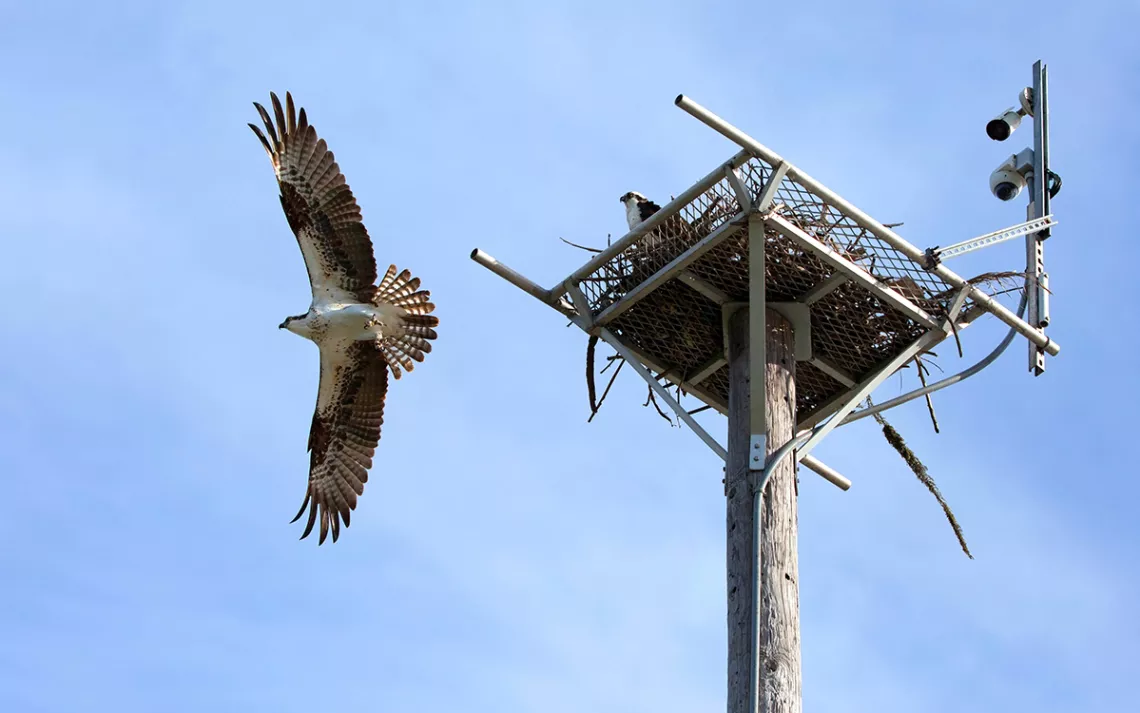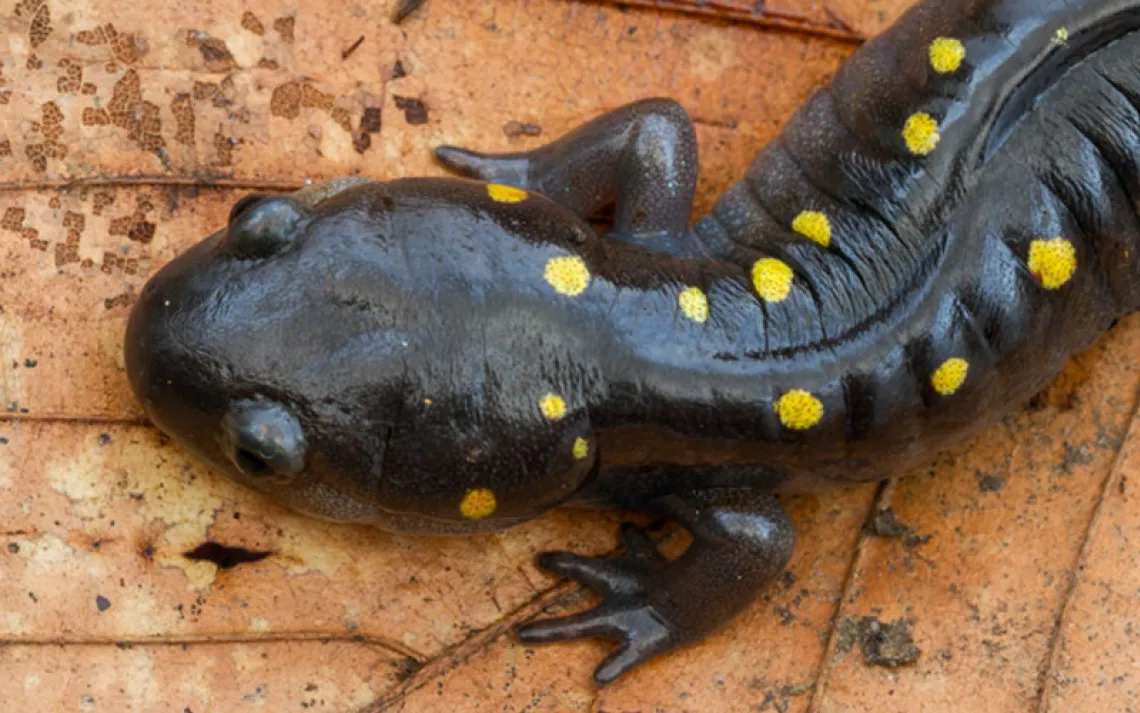Your Guide to Spring Wildlife Webcams
How to watch eagles, bison, and manatees—from your couch

Photo by JillianCain/iStock
Watching wildlife can be a great way to lower stress and connect with the world around us. Fortunately, one doesn't necessarily have to trek to the ends of the earth to get a glimpse at the wonders of wild nature. Thanks to the enthusiasm and ingenuity of wildlife lovers around the world, there are hundreds of wildlife cameras available online to anyone with an internet connection. Given the unpredictability of wildlife, you might not always spot the animal stars of these streaming webcams. But watching the rhythms of a forest or listening to the sounds of waves crashing on the beach can be just as satisfying.
Here are six spring wildlife cameras that allow you to witness wild nature from the comfort of your La-Z-Boy.
Bald Eagles, Iowa
Bald eagles are one of the most inspiring endangered species success stories. The broad support and love for the national bird is reflected in the number of webcams that have popped up in recent years. The Raptor Resource Project has set up one of these webcams in a valley just north of Decorah, Iowa. Now in its fifth year running, the camera gives us an intimate look inside an eagle's nest perched high in a white oak tree. The nest is massive. At its longest point, it's about nine feet long and five feet high according to explore.org. Eagles have nested in this area for years, and the most recent pair just laid eggs on March 12. They're expected to hatch after 35 to 39 days, so grab your popcorn.
Bison, Grasslands National Park, Saskatchewan, Canada
Western prairies are legendary for their once-expansive seas of tall grass and abundant populations of wildlife. Today, the remnant intact areas offer us a tiny window into this iconic landscape. Herds of bison, while diminished in number, can still be seen engineering entire ecosystems as they graze and churn soil with their hooves. Normally, you’d have to trek to Yellowstone National Park or Badlands to see these huge bovines. But now, thanks to a camera set up in Grasslands National Park in Canada’s Saskatchewan province, you can see bison almost any time you'd like. The camera is set up near a watering hole, so sightings are almost guaranteed. While the camera mostly pans over the area toward the horizon, it does oscillate and pivot. So if you don't get the perspective you want initially, hang tight—your view is bound to change soon.
Channel Islands Kelp Forest, Channel Islands National Park, California
The kelp forests off the California coast are home to more than 1,000 species, so you're sure to find something eye-catching in these waters. From sea otters and seals to abalone, this marine ecosystem is a hive of activity. The camera enjoys a prime spot in between three marine reserves, protected areas where aquatic life flourishes. The camera changes angles to new scenery every couple of minutes. One minute you're amid a dizzying thicket of kelp, the next you're watching a shark stalk the sandy bottoms. The effect provides a wondrously varied perspective of a world that’s hidden beyond our usual terrestrial point of view.
Manatees, Homosassa Springs Wildlife State Park, Florida
Do the still-frigid temperatures of early spring have you yearning for a warmer destination? Then watching the manatees in Homosassa Springs, Florida, may be exactly where you want to be. Like humans, manatees prefer warm water during the winter months, so they congregate in springs where a constant supply of warm water bubbles up from underground rivers and the Florida aquifer. Normally, you'd have to pay for entry into the wildlife park to watch manatees in these waters. Thanks to the webcam, you can view them up close any time you'd like. The park also serves as a rehabilitation center for injured manatees.
Honey Bees, Waal, Germany
While many people have seen a beehive, few have seen inside one. For bee-lovers and the curious, you now have a chance. Explore.org has set up a camera inside an active hive, offering viewers a great way to get up close and personal without the fear of being stung. The hive, inside a hollow log, is in a small Bavarian town, just west of Munich. With this feed, one can watch these busy bees go about their daily lives creating combs, making honey, and taking care of their larvae. The collective buzzing can be almost meditative, even if interrupted by the occasional passing car engine, and the inner combs are a wonder to see.
Sea Lions, OrcaLab, British Columbia
The sea lions that laze on Hanson Island off the coast of British Columbia are sure to remind you of your inner beach bum. They can often be seen basking on the rocks for hours on end. The camera is based near OrcaLabs, a small whale research station founded by Dr. Paul Spong in 1970. The center is "based on the philosophy that it is possible to study the wild without interfering with lives or habitat." Watching wildlife go about their daily lives via a discreetly placed camera is one of the best ways to do just that. If you're lucky, you might even get to see a whale breaching when the camera is facing the water. At the very least, the sound of lapping waves is sure to put you in a beach state of mind.
 The Magazine of The Sierra Club
The Magazine of The Sierra Club



